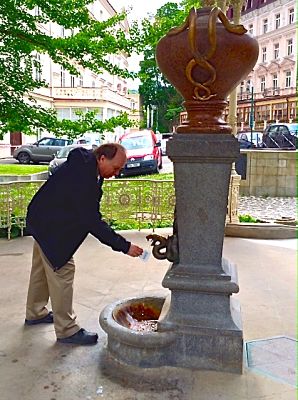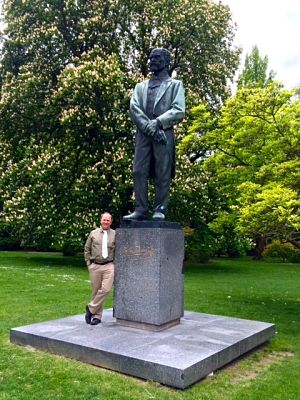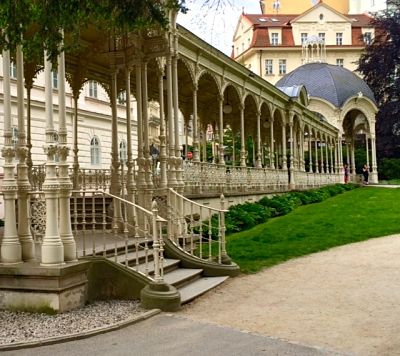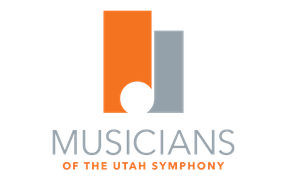Prague & Karlsbad

Charles Bridge and Stare Mesto (Old Town)
The train trip into the Czech Republic is especially scenic. The alps are gone, but the lush rolling hills remain. Huge fields of yellow rapeseed blanket the landscape. The crop is used to produce canola oil, and back home I seem to use a lot of it. The language changes from the sounds of Switzerland as does the make-up of the words themselves. The Czech language seems to be about consonants and different accents, like Polish or Slavic. It’s the most “foreign” of our foreign languages to speak during our three months in Europe. Like a lot of places we go, their English is better here than my attempts to speak the native tongue, but it’s a good idea to know key words or phrases. We study on the train.

Prague Spring Festival, Smetana Hall, “Ma Vlast” with NDR Hamburg Symphony
We’re in Prague for the Spring Music Festival. The weather is good, and our apartment is in a good location. We’ll use some public transportation but probably walk most everywhere. Our place has a kitchen, so we find several small stores to do our shopping.
The opening night of the festival took place at Smetana Hall and featured the NDR Symphony Orchestra of Hamburg. On the program was probably the most important piece of classical music to the Czech people, “Ma Vlast” by Smetana. His music often incorporates Czech folk songs, and the complete “Ma Vlast” takes about 90 minutes. Of all the venues we’ve enjoyed for concerts, opera, recitals and ballet, this is the most beautiful! It includes paintings by Alfons Mucha, stained glass windows in the Art Nouveau style, statues on the walls and ceiling, brass decorative lattice work, rows of globe lights and more. The concert was sold out, and we had spots in the “standing room only” section. The orchestra’s Music Director is Thomas Hengelbrock and he led the orchestra in a passionate performance from start to finish. The visiting orchestra was enthusiastically received.

Dvořák Hall, International Flute Competition
This year the festival hosted the International Flute Competition, and we heard the four finalists perform C.P.E. Bach, Quantz and Frank Martin with orchestra. The four young musicians were French and Korean and were spectacular. We debated their merits, but in the end, the first prize winner was Yubeen Kim. At the awards ceremony he happened to sit down next to us. I caught his picture seconds before the announcement. Even though getting to this point meant thousands upon thousands of hours of practice, it might still have seemed like a surprise to Mr. Kim. We’ll enjoy following his career.
The Alfons Mucha Museum is in Prague and as we own five of his prints, we thought it was an important spot to visit. Mucha was a leader in the Art Nouveau style and a Czech hero. He became famous for his beautiful decorative art paintings, and the museum collection, early photographs and his biography were really fascinating. He died shortly after being arrested by the Gestapo.

Alfons Mucha Museum
We also heard two of the finalists for the International Clarinet Competition. This year’s winner might be a familiar name to several of our colleagues in the Utah Symphony. His name is Sang Yoon Kim and he is a graduate of the Colburn School of Music in Los Angeles.
We saw the opera “From the House of the Dead” by Smetana. The music was chaotic and one audience member yelled “boo!” at the first intermission. However, nationalistic pride produced many more “bravos” at the opera’s conclusion. Like many “box” seats in opera houses, it was hard to see the action on stage. It gave me more of an opportunity to evaluate the music. It wasn’t to my liking.

“La Traviata” at the State Opera
Seeing “La Traviata” by Verdi the next night was more enjoyable. Svatopluk Sem, who sang the role of Giorgio Germont, was a standout, and hearing those familiar beautiful long melodies was enjoyable. For the second night in a row, the action on stage included female nudity. Having seen it on Czech TV and elsewhere, it’s not so much of an issue here as in Utah!
Smoking is surprisingly pervasive in Europe. It’s allowed in outdoor areas and if you are attempting to escape an overheated opera house or enjoy dinner outside, it can be hard to escape. We are often adjusting our location to find a smoke-free environment. It seems disturbingly ironic to see health and beauty specialists smoking outside of a day spa or people at the top of a Swiss alp taking in the fresh air and view while lighting up.

Even angels smoke in Prague!
In the Dvořák hall, there is a poster of the Czech Philharmonic. They employ 118 musicians. In both the flute and trumpet sections there appear to be a father/son combination. In Utah we are about 84 musicians and we work with four musicians named “David”. In the Czech Phil they have 16 players with the name “Jiri”! We’ll hear them this week.
We went to visit the cemetery with the grave sites of Dvořák and Smetana. Flowers adorn their graves, and on Smetana’s granite tombstone were the seven notes from the second flute solo which starts “The Moldau”! At both sites small crowds stood in reflection. High on a hill was another vantage point to overlook the beautiful city and the winding Moldau River below.

Dvořák’s gravesite
The St. Petersburg Philharmonic was in town for two concerts, and we attended both of them. Yuri Temirkanov was on the podium, and we enjoyed the Shostakovich Symphonies No.7 & No. 5. It’s a huge orchestra with a huge sound. I was struck by the expressive wind and brass playing and the wall of sound from the strings. The winds have a greater refinement than their recordings from the 20th century, and Temirkanov kept his conducting to a minimum. The second concert featured Julian Rachlin playing the Shostakovich Violin Concerto. Since the sabbatical began, this is our fourth time hearing this concerto! We may have saved the best for last! Mr. Rachlin was really in command. The opening and his lack of vibrato made this music sound icy cold. His tone developed into a beautifully romantic quality and then the driving force in the Allegro made me think he could saw his Stradivari violin in two!

Smetana’s grave stone
His Paganini encore was equally spectacular! During the concerts on two consecutive nights, the action on stage went uninterrupted while two people in the audience had to receive medical attention. The response to each who had fainted was immediate, but the wooden seats and platforms where we sat were so noisy that Mr. Rachlin could be noticeably seen looking out into the audience and the area where the medical personnel had gathered. The first ill fellow sat in the row in front of us, and I thought this might be his last time hearing a concert, but he came to and managed to walk through the aisle with some assistance to the exit.
Hearing the St. Petersburg Philharmonic confirmed the importance of what we call the auxiliary instruments in an orchestra. This orchestra had some terrific musicians playing piccolo, E-flat clarinet and bass clarinet! These solo instruments really made the most of their opportunities, and in the music of Shostakovich, they come often!

View of Karlsbad
We enjoyed a night in the beautiful and modern Design Hotel Elephant before taking the train to Karlovy Vary, or Karlsbad. This town has for centuries been known for it’s therapeutic hot water springs. Lisa had booked this amazing room in a pensione overlooking the city, thanks to her flute playing friend and travel connoisseur Steven Schultz. The buildings are painted in a variety of pastel colors and are beautifully maintained. Most are five or six stories high and have names like Mozart, Menuet, Alisa and Nikolina. The streets are almost void of cars. The long promenades are filled with people sipping and strolling. They can be seen munching on Oplatky wafers and drinking the warm or hot mineral waters from their individual “pohareks”. These vessels come in a variety of shapes and sizes. They are ceramic and include a narrow spout that receives the water on the way to your mouth. I got a little one. The water has a faint flavor of tea. It’s supposed to help with digestion, your liver and a long list of things that must be promoted by the local travel bureau! On our second day in Karlovy Vary we heard an afternoon recital of soprano, flute and organ music in the Mary Magdalene Church and an evening performance of operetta music with the Karlovy Vary Philharmonic. This concert featured many Strauss waltzes. There were a total of nine violins, so after the St. Petersburg Phil., it seemed a bit thin. The audience enjoyed the music.

“Taking the waters”
Karlovy Vary is a place that had been frequented by people like Bach, Beethoven, Brahms, Mozart, Dvořák, Smetana, Chopin, Puccini, Strauss, Mahler, Tchaikovsky and many others. Movie stars have come to this town, and part of “Casino Royale” with Daniel Craig as 007 was shot at the Grand Pupp hotel. The German writer and statesman, Johann Wolfgang Von Goethe, used to take walks in the woods with Beethoven. I’m not sure if the spring waters helped us or not, but we found a spa in town where we spent three hours enjoying the same benefits that may have been experienced by these famous composers. The spa was built around the stone mountainside. The pool is made from small ceramic tiles in different shades of green with streaks of gold and silver. The irregular shape has rounded borders and the water sloshes over the side. One of our treatments included going from one very hot pool to a very cold pool and back and forth. It made me think of Goldilocks trying to find the porridge that was “just right”. That wasn’t it! I then relaxed and breathed deeply in an electro-inhalation room and then went for a massage with “Victor”. Victor was a stocky middle aged man who quickly got me on the massage table. His technique was aggressive. It made me think he had been an interrogator with the KGB! When he seemed to be pounding on my back the rhythm from a fast March by Shostakovich, I half expected him to say, “You vill tell us vhat ve vant to know!” He put an hour of himself into 15 minutes, and I thought afterwards that he might be the one that needs a massage! Lisa whined about the light massage she got from her masseuse. Next time she can get Victor!

Dvořák statue
We enjoyed our strolls, our sipping, some good food and the views overlooking Karlovy Vary. We took a picture of the Dvořák sculpture in the park and shopped around for more pohareks.
On our last morning, we walked up to see the Russian Orthodox Church passing places like the Chopin Villa, the Smetana Villa and the Tchaikovsky Palace. In the same area was the Russian Embassy and a statue of Karl Marx. This spot marked the entrance to the forest said to be frequented by Beethoven and many others. Immediately, the early morning sound of birds is apparent. They were singing in a way that reminded me of Beethoven’s 6th Symphony. Could they too be in F Major? We wondered if Beethoven could have heard these calls. There was definitely something magical about this forest, and a little further up was a plaque identifying a spot where Tchaikovsky had stopped to look and listen.

Historic mineral springs colonnade
The rains came, and with our pohareks in hand, we were soon back in Prague. In some of Europe’s oldest cities, there are spots where time seems to stand still. We keep our eyes open and try to take it all in.
– Robert Stephenson and Lisa Byrnes
